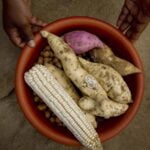More than 820 million people are estimated to be experiencing hunger and around 2 billion to be facing “moderate to severe food insecurity,” according to a report published July 15 by the Food and Agricultural Organization of the United Nations (FAO).
This represents around 11% and 26% of the global population, respectively. While the percentage of the global population facing hunger has remained stable since 2015, the total number of hungry persons has continued to increase, albeit at a slowed rate.
Global hunger declined each year from 2005 to 2015 when it began to rise again, moving from 785.4 million (2015) to 821.6 million (2018).
The number of severely food insecure persons increased from 568.2 million to 704.3 million over the past three years.
Progress in addressing heightened levels of hunger and malnourishment in recent years has been uneven.
“Hunger is rising in almost all subregions of Africa and, to a lesser extent, in Latin America and Western Asia,” the report said. “We welcome the great progress seen in Southern Asia in the last five years, but the prevalence of undernourishment in this subregion is still the highest in Asia.”
Nearly 20% of Africa faces undernourishment (ranging from 30.8% in Eastern Africa to 7.1% in Northern Africa), compared to 15% of Southern Asia, 12% of Western Asia and 7% of Latin America / Caribbean.
While food insecurity is most common in low- and middle-income nations, an estimated 8% of people living in North America and Europe experience moderate-to-severe food insecurity.
Definitions of food insecurity, hunger and malnourishment are available here.
Leading causes of hunger and food insecurity are conflict and climate change, which disrupt and strain agricultural systems and natural resources.
Economic slowdowns are another significant factor in undernourishment, particularly in “middle-income countries and countries that rely heavily on international trade of primary commodities.”
Two actions were set forth in the report to help address hunger and food insecurity:
- Funding of social safety net programs and providing universal access to healthcare and education
- Adopting and implementing policies aimed at reducing inequality
“To make our transformational vision pro-poor and inclusive, we must integrate food security and nutrition concerns into poverty reduction efforts to make the most of the synergies between eradicating poverty, hunger, food insecurity and malnutrition,” the report said. “We must also ensure that reducing gender inequalities and social exclusion of population groups is either the means to, or the outcome of, improved food security and nutrition.”
The full report is available here.





